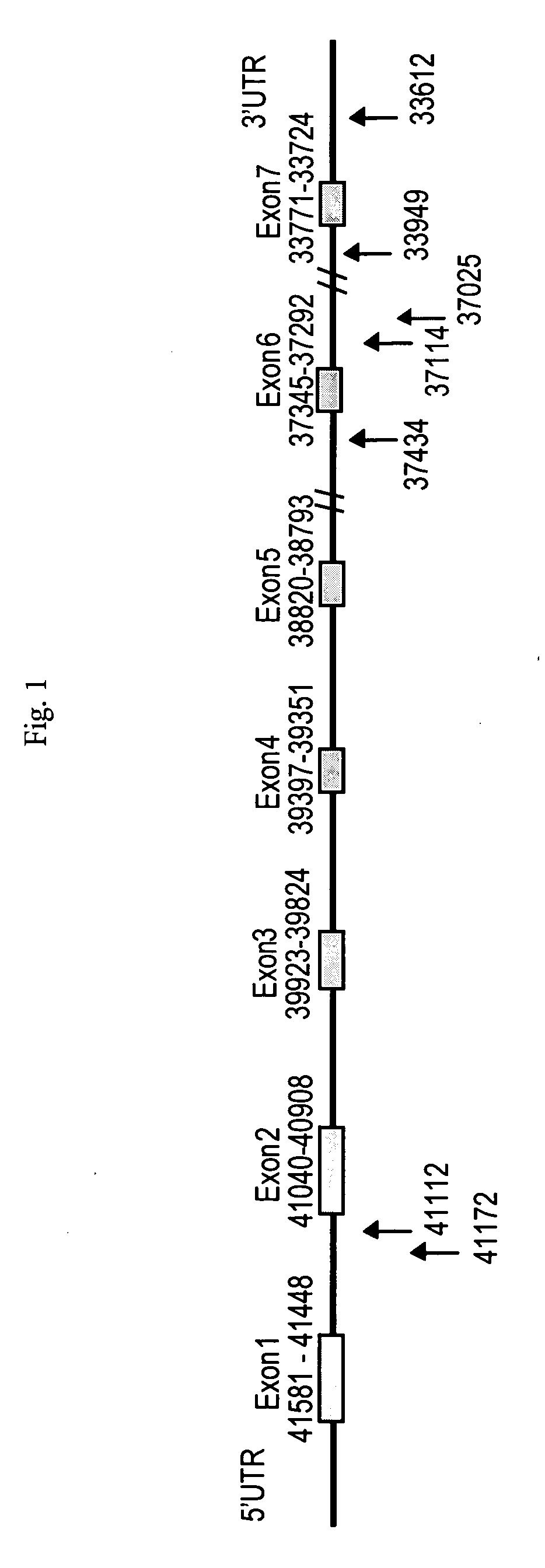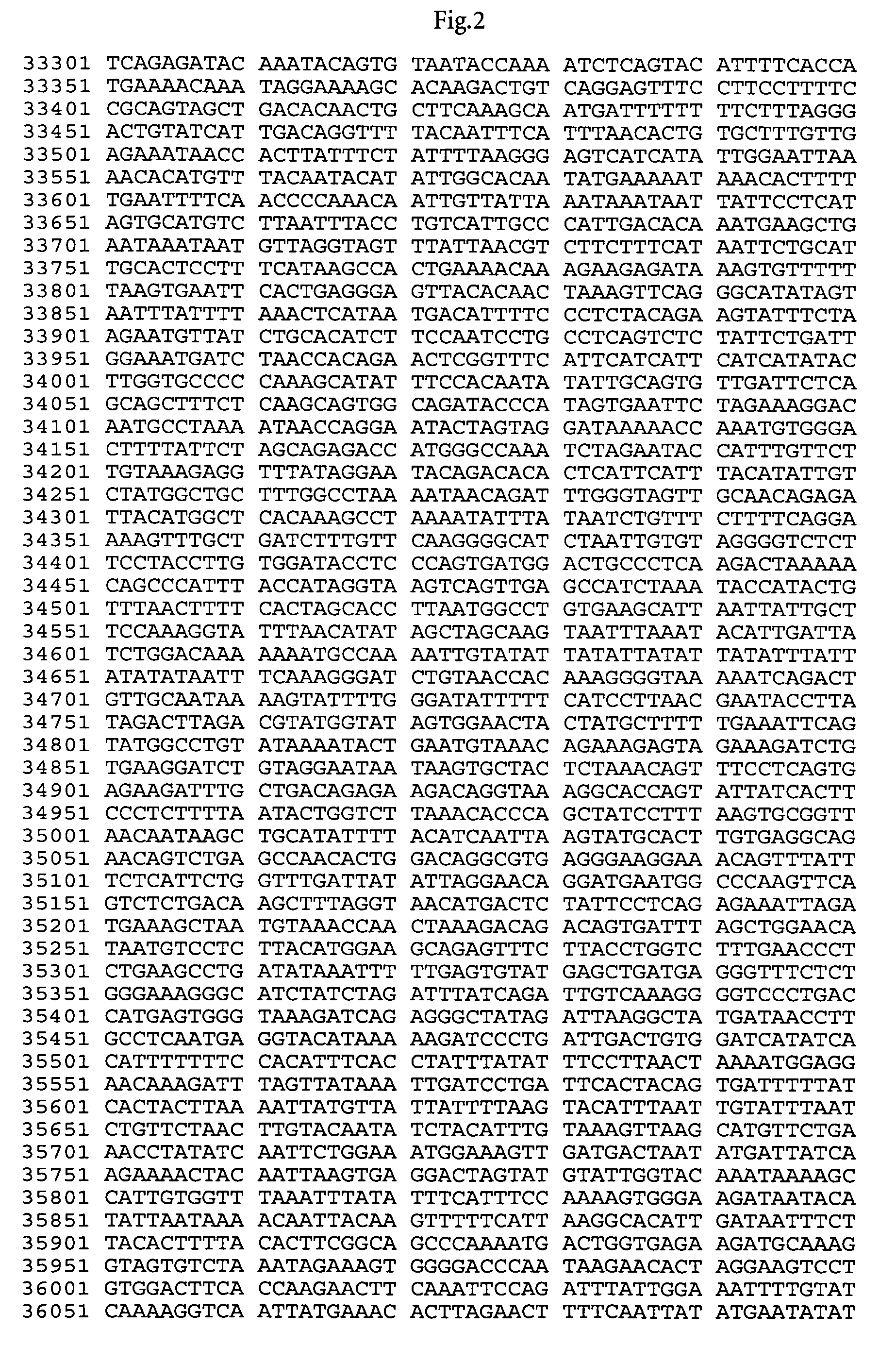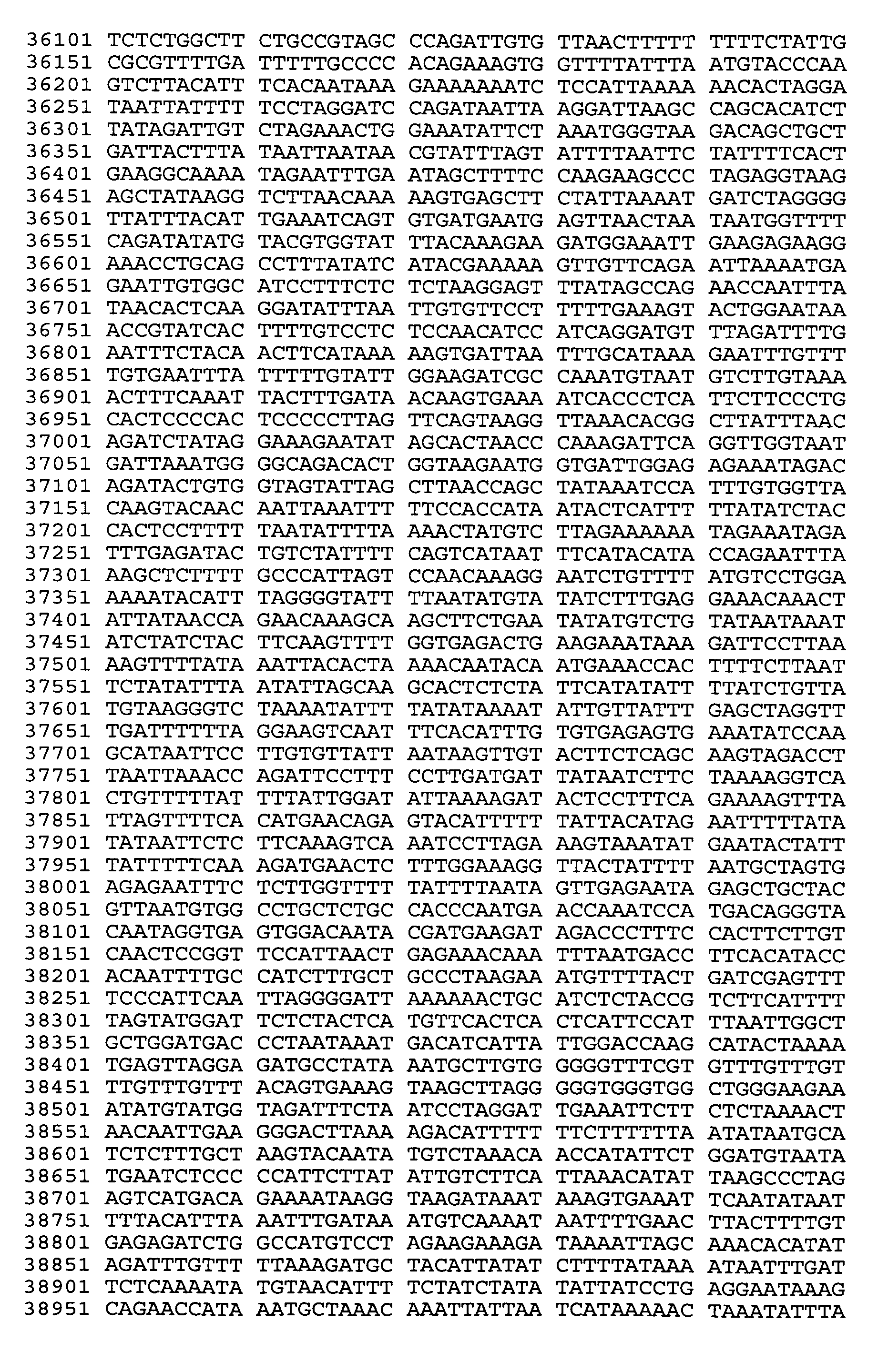Genetic polymorphisms in the preprotachykinin gene
a gene and gene technology, applied in the field of gene polymorphisms in the preprotachykinin gene, can solve problems such as difficult identification
- Summary
- Abstract
- Description
- Claims
- Application Information
AI Technical Summary
Benefits of technology
Problems solved by technology
Method used
Image
Examples
example 1
Detection of Polymorphisms
[0138] For all single nucleotide polymorphisms discovery was performed by double-stranded DNA sequencing using an ABI capillary sequencer and Big Dye chemistry (ABI). First the genomic organization of the NKNA gene was derived from a PAC clone found in the EMBL database with the accession no. EM_HUM1:AC004140.1 by a BLAST search with the NKNA mRNA (accession no. U37529.1 in the EMBL database). Exon-intron boundaries were derived as indicated in FIG. 1 and primers were designed to amplify all coding and regulatory regions of the gene. The primers used to amplify all exons are shown below and were also used as sequencing primers. All polymorphisms were targeted with these pair-of-primer sets:
TABLE 1List of oligonucleotide primers for polymorphism detectionPrimer typeNucleotide sequenceSEQ ID NOPrimer 1CATGTTTACAATACATATTGGCACSEQ ID NO. 2Primer 2GTATATGATGAATGATGSEQ ID NO. 3Primer 3CACCCTCATTCTTCCCTGCSEQ ID NO. 4Primer 4CTTCAGTCTCACCAAAACTTGSEQ ID NO. 5Prim...
example 2
Selection of Subjects
[0141] The study protocol and the informed consent form were submitted for approval to the local ethical committee. All subjects provided written informed consent for their blood sample to be used for genotyping. The consent could be withdrawn up to a month later, if the subjects changed their mind.
[0142] All the samples were assigned new independent codes and within six months after clinical database closure the link between the new and original codes was deleted. This was an added measure to ensure patient confidentiality; however, as a consequence it is not possible to retrieve genotype information based on the patient's name or number used in the original clinical trial. In approximately 15 years time, all blood and DNA samples will be destroyed.
[0143] Single blood samples (9 ml) were collected in EDTA tubes. These were frozen and stored between −20 and −70° C., before being sent to the Roche Central Sample Office (CSO) in Ba...
example 3
Emesis Test
[0155] The described emesis test was performed in two studies. A Single Ascending Dose study (SAD) and a Multiple Ascending Dose study (MAD). In the SAD the emesis test was performed 6 and / or 24 hrs after intake of 2-(3,5-bis-trifluoromethyl-phenyl)-N-methyl-N-(6-morpholin-4-yl-4-o-tolyl-pyridin-3-yl)-isobutyramide. In the MAD the emesis test was performed after 14 once daily doses, 6 or 24 hrs after the last dose.
PUM
| Property | Measurement | Unit |
|---|---|---|
| Fraction | aaaaa | aaaaa |
| Annealing point | aaaaa | aaaaa |
| Digital information | aaaaa | aaaaa |
Abstract
Description
Claims
Application Information
 Login to View More
Login to View More - R&D
- Intellectual Property
- Life Sciences
- Materials
- Tech Scout
- Unparalleled Data Quality
- Higher Quality Content
- 60% Fewer Hallucinations
Browse by: Latest US Patents, China's latest patents, Technical Efficacy Thesaurus, Application Domain, Technology Topic, Popular Technical Reports.
© 2025 PatSnap. All rights reserved.Legal|Privacy policy|Modern Slavery Act Transparency Statement|Sitemap|About US| Contact US: help@patsnap.com



